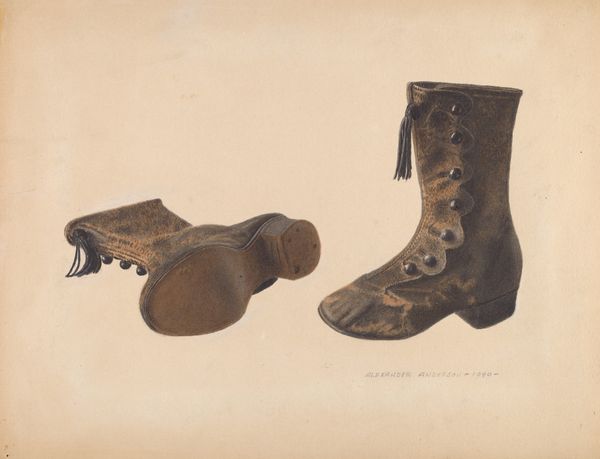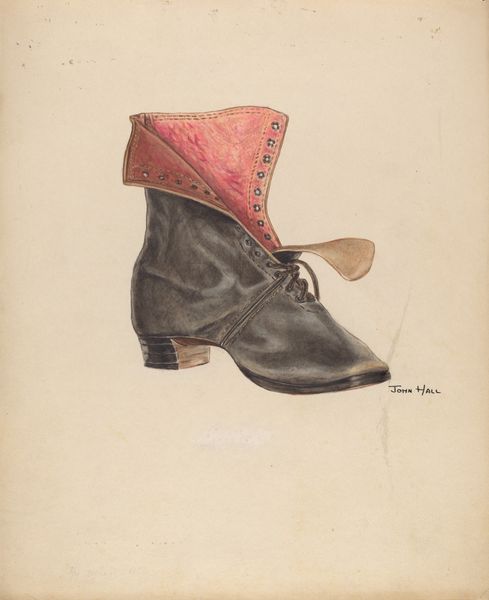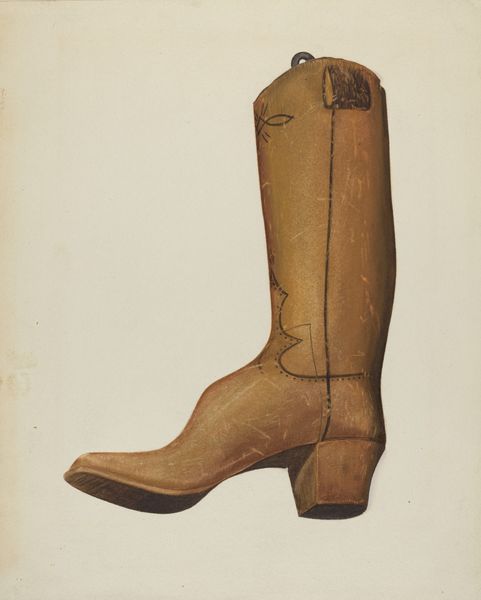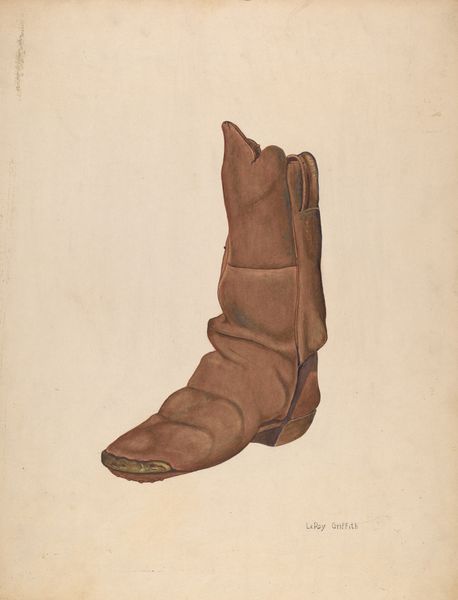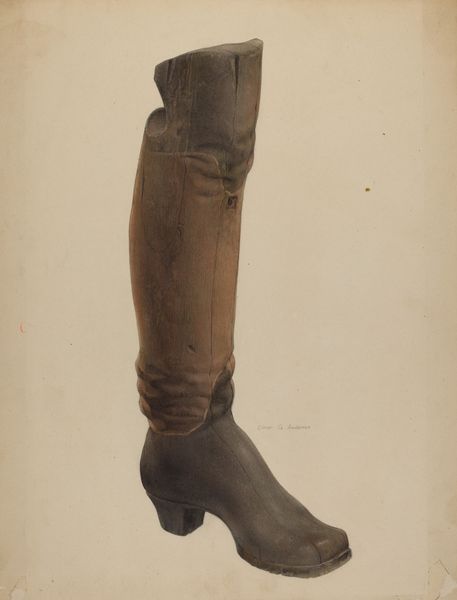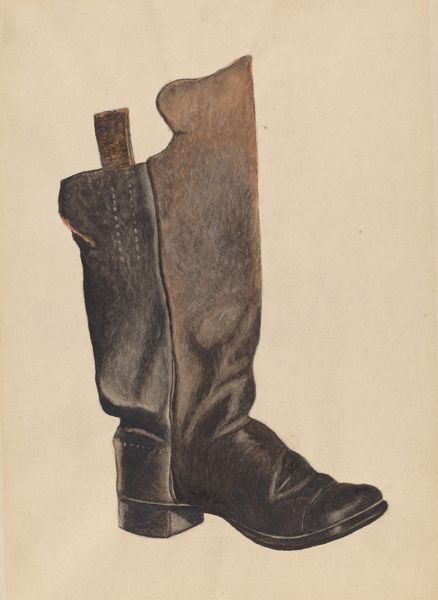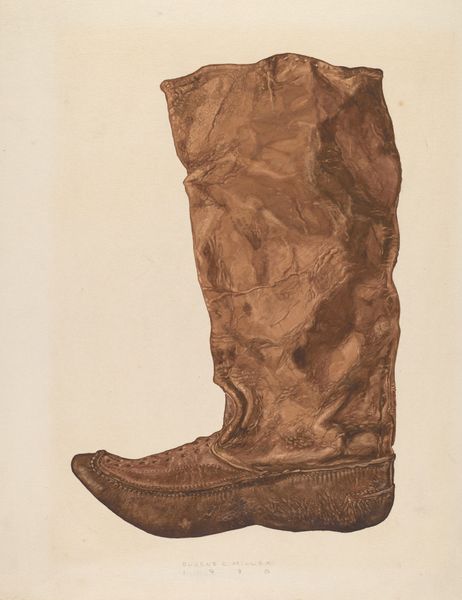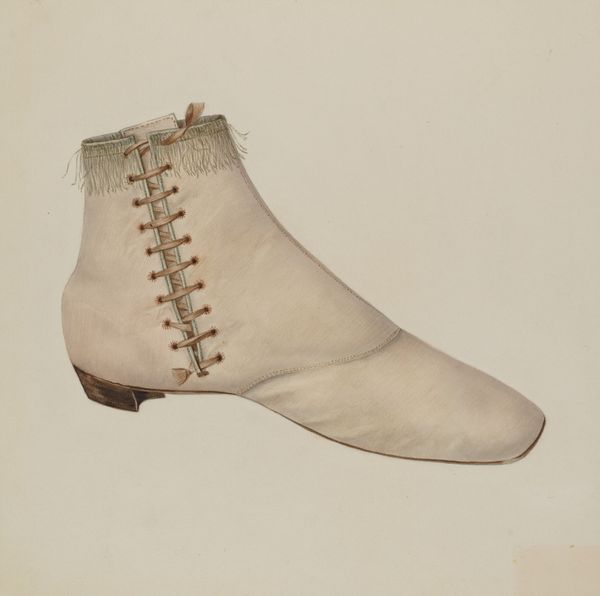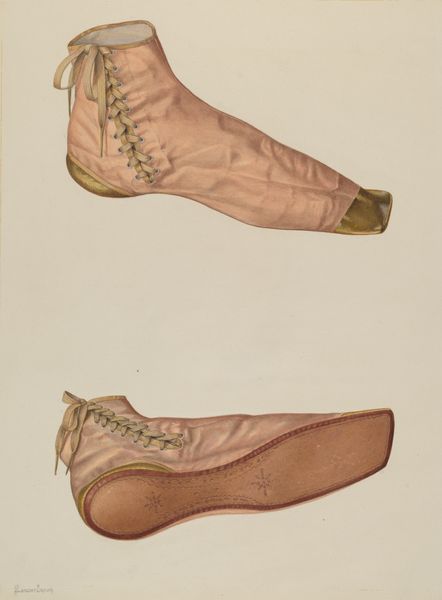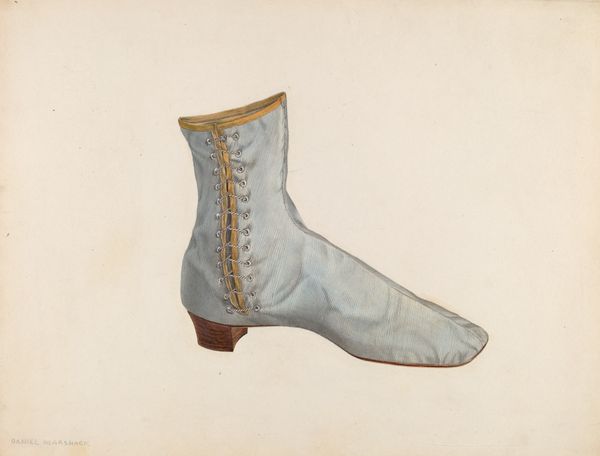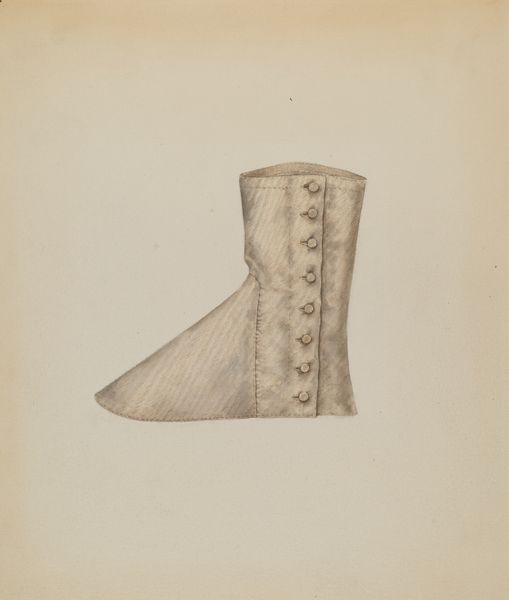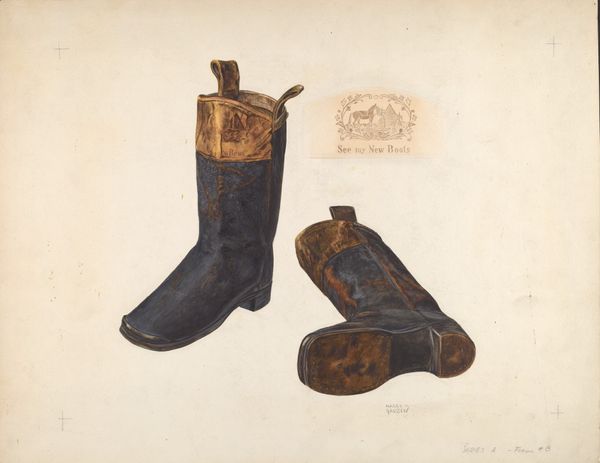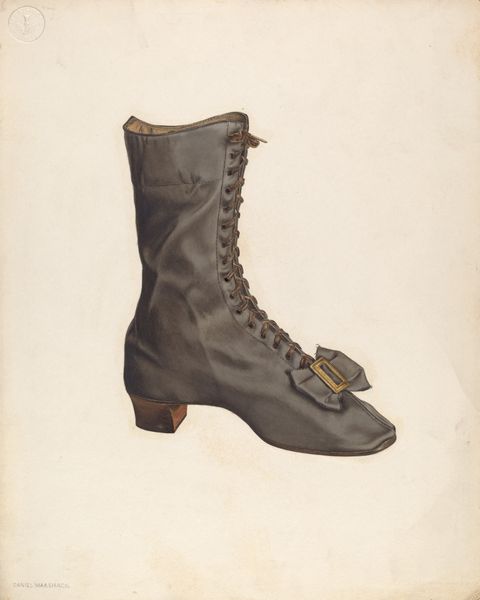
drawing, pencil, graphite, charcoal
#
drawing
#
charcoal drawing
#
pencil drawing
#
pencil
#
graphite
#
charcoal
#
academic-art
#
charcoal
#
graphite
Dimensions: overall: 36.5 x 29.2 cm (14 3/8 x 11 1/2 in.)
Copyright: National Gallery of Art: CC0 1.0
Editor: Here we have Dorothy Dwin’s "Lady's Boot," created in 1941 using graphite, charcoal, and pencil. I find the textures incredibly compelling – especially the way the artist captures the sheen of the leather against the delicate laces. What compositional elements stand out to you? Curator: Formally, the image strikes me through its concentration of tonal variations, distributed from the dense shades of the boot to the virtually untouched paper that serves as its background. This contrast isolates the form and focuses the viewer's attention. Notice how the line becomes an active agent, delineating not merely the object’s contour but also modeling its surface. Observe the convergence of lines, coaxing our eyes to specific focal points. How might we interpret this strategic employment? Editor: So, it's not just about *what* we're seeing – a boot – but *how* we're seeing it: through these stark contrasts and deliberate lines. Is the artist perhaps emphasizing the structure and shape over any inherent meaning of the boot itself? Curator: Precisely. The formal qualities become the very subject of the piece. The tonal scale ranges elegantly, drawing attention to the textures. And consider, too, the boot’s carefully articulated form: its curve and lines—these all contribute to the overall compositional harmony. Dwin isn’t simply depicting; she's composing a study in form. Does this approach alter your initial perception of the work? Editor: It definitely does. I initially focused on the texture, but now I see how every element contributes to a larger structure. The simplicity of the composition almost transforms this everyday object into an abstract form, highlighting shapes. Curator: Indeed. Through rigorous observation and deft handling of the media, the artist elevates a common item to a compelling study of shape, texture, and tone. A reminder that formalism encourages us to look intently at how an artwork is made, often revealing as much as what the artwork depicts. Editor: Thank you. I’ll definitely view artwork differently now, focusing more on those design elements.
Comments
No comments
Be the first to comment and join the conversation on the ultimate creative platform.
